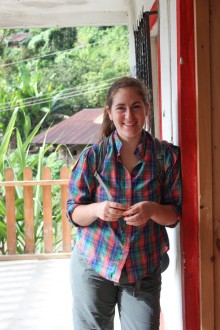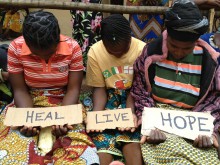Don Juan Mora, a small-scale organic coffee farmer in Nicaragua, reached down and took a piece of organic material that was covered with a fungal mat from the soil on his farm. “When you see this, it means the soil is good and coffee plants will do well,” he said. As a master gardener back in the U.S., this made me think more about soil and its importance. A commonly used axiom in gardening and horticulture is the statement that “soil is not dirt.” This simple but profound gardening proverb suggests that healthy soil is a complex mixture of minerals, organic matter, air, water and millions of different living organisms (bacteria, archaea, fungi, algae, protozoa, nematodes, arthropods, earthworms, gastropods and more). We should think of healthy soil as a living, breathing organism which needs to be nourished in order to support plant and animal life. This concept has also been called the “soil food web” to denote the interdependent nature of these relationships.
Blog
-
AnonymousMarch 24, 2015Categories:
-
Beth Ann CaspersenFebruary 2, 2015Categories:
Equal Exchange is proudly supporting the Coffee Quality Institute’s Gender Equity program as a Sustaining Partner. Equal Exchange Coffee Quality Manager Beth Ann Caspersen participated in the second of four international workshops in Palacaguina, Nicaragua in January. This is the second of two blog posts about the experience.
-
Bethany KarbowskiJanuary 28, 2015Categories:
"Breaking the crust" is a term used in coffee cupping to describe the action of using a spoon to release the true aroma and quality of coffee that has been steeping in a glass beneath a layer of frothy grounds. Reflecting back on my experience with an Equal Exchange/Presbyterian Hunger Program delegation trip to a coffee co-op in Nicaragua in early January, “breaking the crust” was exactly what the journey felt like for me. It was my first "real" travel away from my insulated life in the United States and I had the unique opportunity to reveal something that was authentic and powerful regarding the human connection between the work that I do every day at Equal Exchange and the farmers who are growing and harvesting the coffee we sell.
-
Beth Ann CaspersenJanuary 21, 2015Categories:
Equal Exchange is proudly supporting the Coffee Quality Institute’s Gender Equity program as a Sustaining Partner. Equal Exchange Coffee Quality Manager Beth Ann Caspersen participated in the second of four international workshops in Palacaguina, Nicaragua, last week. This is the first of two blog posts from Beth Ann about the experience.
-
Beth Ann CaspersenNovember 18, 2014Categories:In 2004, we launched a training program called Cooperation in Quality as a means to empower coffee cuppers within the cooperative supply chain with the knowledge necessary to produce specialty coffee. That first year we invited six cuppers from Nicaragua to Equal Exchange for a week of roasting and cupping coffee as a way to share information about how specialty coffees are selected and graded.
-
Carly KadlecNovember 18, 2014Categories:

-
Beth Ann CaspersenOctober 14, 2014Categories:
Share your story.

-
Sara FioreSeptember 25, 2014Categories:

-
Carly KadlecJuly 30, 2014Categories:
The Cooperation in Productivity event was the first time Equal Exchange has organized a peer-led, on-farm learning experience between farmer organizations. It was incredibly exciting, not just because it was the first event of its kind for us, but because of all the farmer-driven content.
-
Carly KadlecJuly 25, 2014Categories:
In Part 1, I explained the groundwork philosophy that the members of COMSA (Honduras) shared with the members of Las Colinas (El Salvador). Now let's get a little nerdy and dig into the more practical, technical side of what COMSA shared and how it has contributed to their success.